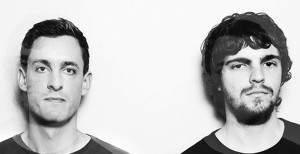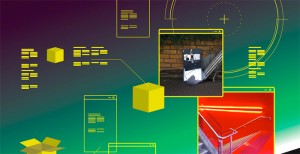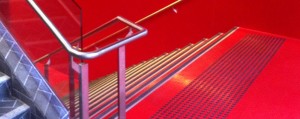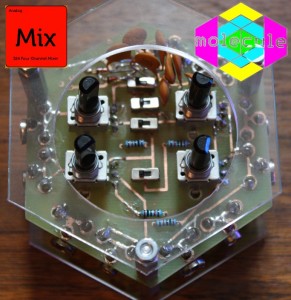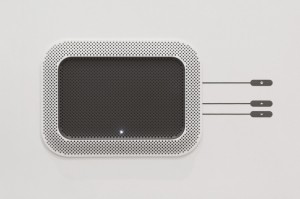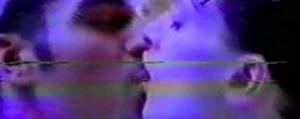Maybe you can’t dance about architecture or write about music but evidently you can mix and match media. Because dancing to songs, written about buildings is a specialty for divisively undercooked Australian punk band Taco Leg. They produce the kind of sound that any unfortunate soul drawn to their cacophonous compound of poorly played, maltreated instruments will find them selves defending to non-believers time and again –the smarter of whom won’t even bother trying.
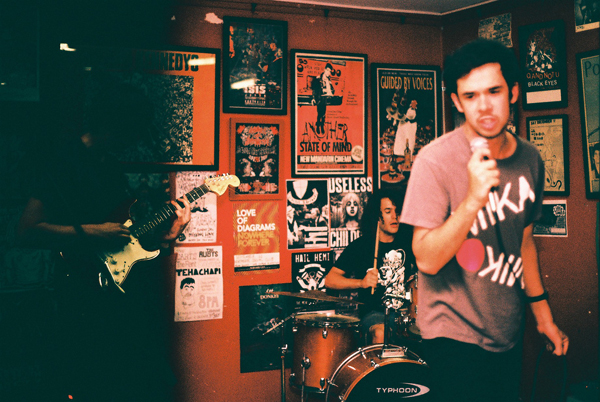
Front man Andrew Murray talks about his band, ideas and aesthetic in terms of architecture. Yet, as a profession presumably reliant on attention to detail, you wouldn’t expect as much, considering the primitive noise Taco Leg have the audacity to call music. A raucous mess made by people more interested in their studies than band practice, it’s a wonder they’ve even managed a record. Yet, based across the west and east coasts of the massive antipodean continent, the disorderly three-piece –including Murray, drummer Richard Ingham and guitarist Clare Weeden (plus “life member and spirit guide” Simon Morrison) –drop their debut self-titled album on Baltimore-based label Fan Death Records (who, incidentally, boast an Ed Schrader release).
An architecture graduate and enthusiast, Murray is a local history buff, who runs his own architecture and design zine The Weather Ring and a website chronicling his favourite architectural esoterica from the equally obscure landscape of the Western Australian suburbs in Perth’s Best Architecture. Here he explores his life’s passion in his typically relaxed, miscellaneous way. It’s a disorganised approach mirrored by a band who rarely play, record when they can and release music maybe a year after the fact, while fronted by a man who loves the lo-fi anti-aesthetic of Beat Happening, admires Black Flag and adores Taylor Swift. Murray is also just as likely to draw inspiration from Indiana Jones as a building based on the virtually unsolveable ‘eternity puzzle‘, while writing songs best summed up by the album cover. It features the captivating staircase from what many would consider an eyesore of a local building but is based on the high-concept of Le Corbusier’s modulor system. That pretty much embodies Taco Leg’s oeuvre: ugly on the outside but fascinating within.
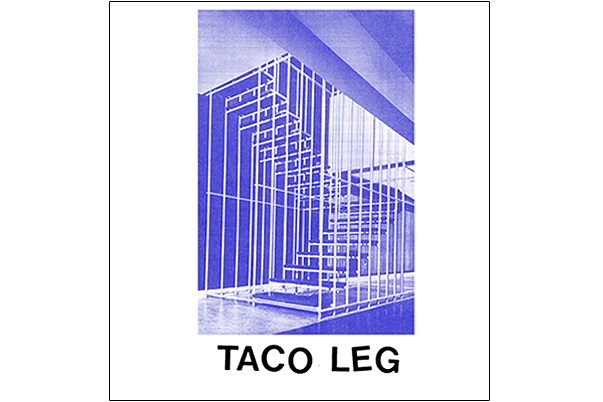
aqnb: Why do you have a band?
Andrew Murray: Why?
aqnb: Yeah.
AM: Because it’s fun. I really like to play it out live. It’s also a nice way of hanging out with friends and playing music. I don’t know. It’s just good. Also hearing loud music is awesome. The sound of a loud guitar is great. It’s the same reason that karaoke’s so good I guess.
aqnb: You’ve always been very conscious of keeping things stripped back.
AM: Yeah but it’s also because that’s all I can achieve. Even in the other band Constant Mongrel, I still only play single notes. I can’t play chords. I try and write the best songs that I can but within… you know I can’t be bothered learning how to play properly. And I can’t be bothered sitting down for four days trying to write a song. I’ll try my hardest to write a good song but within limits. And I would never pay money to hire a studio or something, where Richard can do it for free. This is a fun project, where we have fun together and it’s not about spending 2,000 dollars in a studio to make a recording that’s going to change the world. It’s just fun, hanging out and not being too stressed about it.
[youtube http://www.youtube.com/watch?v=-BxJ5Db_7U0]
aqnb: Would your approach to architecture be the same?
AM: …Similar. It’s complicated.
aqnb: You might kill people if you don’t do it right.
AM: No, that’s the engineer’s job. I definitely subscribe to an idea that is a little bit sparer, a little bit more frugal and cheaper than usual. I’m interested in cheap and economical architecture. A dry architecture that still takes a lot of effort but is kind of obvious in the end.
aqnb: Didn’t you say you love the Perth Arena? That’s pretty big and expensive.
AM: [Laughs] It’s a very complicated subject, I guess. I mean that as in architecture that I would personally do. I would never design a building like the Perth Arena but it’s by my favourite architects and I still respect their work. It’s just like my favourite band might be some really technical amazing hardcore band but I wouldn’t ever make music like that, I’ll leave that to them. I’m more interested in doing architecture that’s very direct, simple and economical. But I also like to look at more complicated ones.
aqnb: Are you still covering Perth for the Weather Ring, seeing you’re in Melbourne now?
AM: Yeah, it’s all still Perth. We’ve kind of expanded to doing our own history, and longer interviews. So there’s a couple of 5,000 word interviews, that sort of thing. It just takes forever to edit and get permission from people. Working out all the details because I don’t want to get anything wrong.
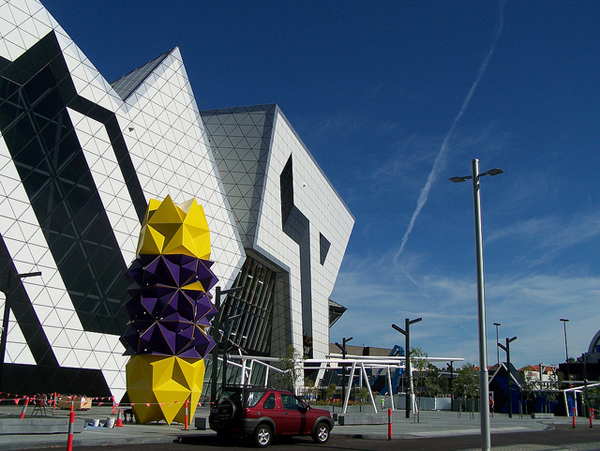
aqnb: Is ‘The Original’ based on the fact you’ve been re-recording some old tracks?
AM: No. That song is about the Perth Arena. It’s very complicated architectural theory, that song. It’s all very silly but it’s about a practice that are based in Melbourne and they do work that’s very much ‘about’ Melbourne, it’s very site-specific and they were employed to do a building in Perth. It’s just me saying, ‘what happens when all your research and history or practice in Melbourne does a building in Perth? What happens?’
I mean, it turned out they obviously do know what they’re doing and the guy that designed it is from Perth. It’s more just lyrics to pad out a song.
aqnb: But then you’re still doing The Weather Ring but you’re not based in Perth anymore.
AM: Because Perth is what I’m really interested in. I still think it’s a really, really interesting place but it got too hard. I had no friends left. I had no band left; everyone’s in Melbourne.
I don’t disguise my accent, obviously, although I don’t put it on either. Probably in that song [‘Sun’] more than the others, I bung on an accent because I did make those lyrics up on the spot. Kind of like on that last record, ‘Sunbathing in Squalor’. It’s Simon’s riff and I made up the lyrics when we were practicing in Richard’s bedroom, in the middle of summer where it’s 40 degrees [Celsius] outside and it’s just bloody hot. I was drinking a coke at the time, I think, so that’s how I came up with that song. We were thinking of keeping it off because I thought it sounded too-over-the-top ocker but it’s a pretty catchy riff so I left it in.
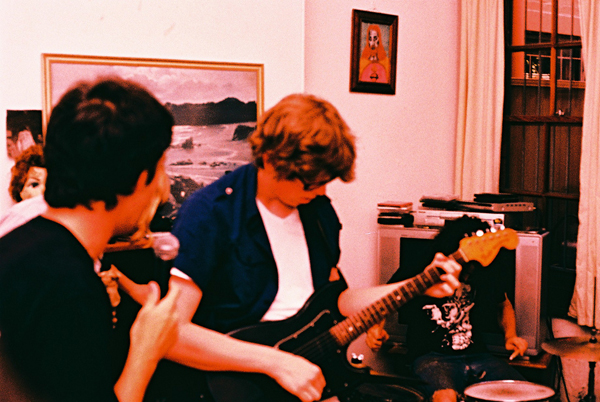
aqnb: ‘Hot One’ or ‘Sun’ I like that one the most. Is there a very Australian sensibility to what you do, a very ‘Perth’ sensibility?
AM: I think so. I guess that (returning to architecture, as always, because that’s what really matters) I’m interested in architecture that’s interested in the local; that’s interested in talking about what it’s like to live in Perth or what it’s like to practice architecture in Perth. What it means to be in Perth.
I’m interested in regional discussions, not just for Perth but I’m interested in architecture, or food that’s particular to a region. I don’t think I set out to make consciously Perth music because I think that’s sort of coming to an end. There’s no such thing as Perth music, just like there’s no such thing as Perth architecture but if you practice architecture in Perth, or you make music in Perth, technically you’re making Perth music. You’re a Perth band.
aqnb: So if you’re into keeping things regional, then how do you feel about global culture?
AM: I don’t mind it. I think it’s fine, obviously, because it’s a thing that happens and I don’t want to tell anyone what not to do but I can see the dangers in it, definitely, because for instance… it’s always been this way where, say in Perth, everyone’s probably more interested in listening to music from elsewhere when there’s good music in there.
I’m really interested in history but some people don’t pay attention. That’s not really a new thing, it’s not like people used to be really into Perth music and now they’re only looking for overseas stuff, so that argument is invalid. Of course it’s a danger because you’ll lose your regional sensibility but it’s also nice, and interesting things come out of it. I think, obviously, it just needs a balance. You need to not lose that sense of place.
aqnb: What I feel is most interesting is the fact that what comes out of that regionalism can be very weird.
AM: Yeah, in Australia generally. It’s only when you go away that you realise how different it is. Even if you think it’s the same, where you go to New York and everyone dresses the same or something, you come back home and realise there’s all those weird things that are different.
But the thing, in Perth, you don’t get a lot of precedence. You can’t see that many bands and you can’t really experience them unless you travel. So that’s why people from Perth travel a lot because you’ve got to see things first-hand. You can read a lot about good bands but you’re never going to see them.
aqnb: It’s like that environment can have a vastly different effect on people. Either they never leave and live in a bubble or travel more than someone from a more cosmopolitan area.
AM: It’s not so much now but especially in the 40s, 50s and 60s there was always a tradition that, when you graduated from architecture school, you’d go on this grand tour. You’d go away for two years and see the buildings that you were studying. You would go experience it first hand so you could actually understand what they’re like visually and spiritually. Maybe you’d work in London for a few years and then you’d come back and work. You’d experience the world… What that has to do with Taco Leg, I don’t know [laughs].
aqnb: I didn’t know that happened so far back.
AM: Yeah even in the 20s. They would catch a boat and it would take them three months to get to London, or however long.
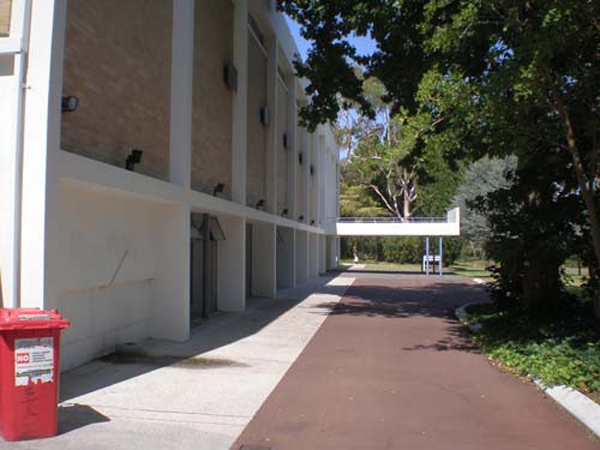
aqnb: I envy that distance. You used to leave and call home once a twice a year, now all you have to do is send a text and it’s like being back home.
AM: I went to Japan and I sent and email to mum and dad every second day. It’s like I didn’t really leave. But you don’t have to. The world is up to you, you know.
aqnb: I could be in the middle of the Andes and a satellite could track me down.
AM: There was obviously a lot more distance back in the old days but… I guess its weird. I’ll go home for Christmas and I’ll pretty much know everything that’s gone on back home and slot in, it’s like you never left. My mum still emails updates every three or four days.
aqnb: Are you recording for the next Taco Leg album?
AM: No. It’s a little bit hard because we all live in different cities. But we’re all going home for Christmas so I think we’ll maybe try and do a couple of practices. I’ve written a couple of songs, so we’ll see how it goes with recording and see if someone wants to put it out. I think we’ll keep going flying Richard over for a couple of shows. So we might play two or three times a year, at least until Richard moves over.
aqnb: Do you think he will?
AM: Nah.
Taco Leg’s self-titled album is out now on Fan Death Records.
Header image by: c. onton
